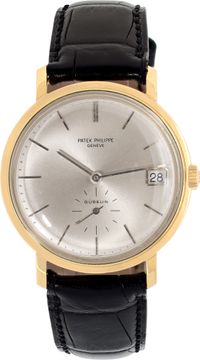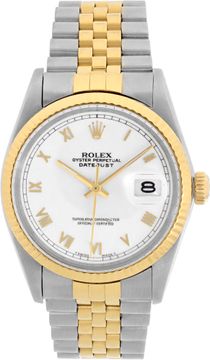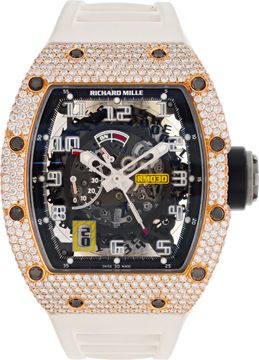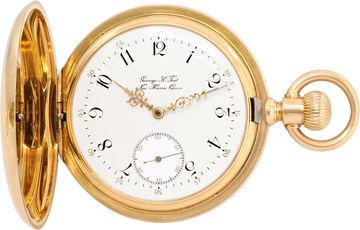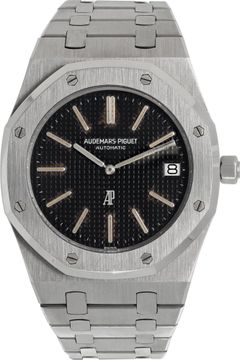Back to Basics: What is a Perpetual Calendar Watch?

Following the first chapter of the Back to Basics series where we explored the GMT watch, we now turn our attention to answering the question of what is a perpetual calendar. Some of the most coveted and expensive watches, perpetual calendars have impressed watch enthusiasts for centuries–first in pocket watches, then in wristwatches. Read on to learn more about the famed perpetual calendar complication and discover some fantastic perpetual calendar watches from leading watch brands.
What is a Perpetual Calendar and What Does it Do?
As its name implies, a calendar watch is one that indicates calendar information, which can include either one or a combination of the following: date, day, month, week, year, and moonphase. For instance, a time and date watch is a simple calendar watch. On the other hand, a perpetual calendar is one of the most mechanically sophisticated calendar watches there is.

A standard calendar watch has a date disc with 31 days, therefore, the wearer must manually adjust it at the beginning of each month if the previous month has less than 31 days. For example, April only has 30 days, so on the first of May, the date window on the watch has to be manually advanced from 31 to 1. Alternatively, an annual calendar is more complex because it can differentiate between months with 30 and 31 days. However, it does not take into consideration the fewer days in February. Therefore, an annual calendar watch must be manually adjusted once a year–on the first day of March. The rest of the year, an annual calendar watch will automatically adjust to indicate the right date, date, month, and so on.
Even more complex is the perpetual calendar complication (remember, a “complication” is any function on a watch that goes beyond telling the time). A mechanical masterpiece, not only does a perpetual calendar take into consideration all the different days of the 12 months, but also, the occurrence of a leap year every four years. So a perpetual calendar–as suggested by its name–displays the correct date and year cycle (and subsequently day, month, and moonphase too) in perpetuity.

Well, that’s not entirely true. In the year 2100, what would ordinarily be a leap year according to the four-year cycle, will, in fact, be ignored according to the standard Gregorian calendar. So, a perpetual calendar will have to be manually adjusted in 2100. However, that’s well beyond our lifetime, so for our purposes, a correctly set perpetual calendar will continue to tell the correct time and date as long as the movement keeps running.
Brief History of the Perpetual Calendar
Rudimentary examples of the perpetual calendar complication date back as early as the 1600s, when English clockmaker Thomas Tompion and his famous successor, George Graham used it in clocks. However, it was an English horologist named Thomas Mudge (the same man that invented the lever escapement, which is still ubiquitous to modern mechanical watches) that adapted the perpetual calendar complication for a pocket watches in the 1700s. There are two perpetual calendar pocket watches made by Mudge that are currently known to exist; one sits in the British Museum (dated 1764) and the other (dated 1762) was purchased by the Patek Philippe Museum in 2016.

It is fitting that Patek Philippe purchased the earliest known example of a perpetual calendar pocket watch since it is Patek Philippe that is credited for creating the world’s very first perpetual calendar wristwatch. In 1898, Patek Philippe developed a perpetual calendar complication capable of keeping time, date, day, month, year and moon phase and fitted it into a woman’s pendant watch. However, there were no buyers for that mechanically advanced piece.
So, in 1925, Patek Philippe re-cased the movement in a yellow gold 34.4mm case and the first perpetual calendar wristwatch was born. The watch was ultimately sold to American watch collector Thomas Emery in 1927 and it has now found its way back to the Patek Philippe Museum in Geneva.
Patek Philippe Perpetual Calendar Watches
Since Patek Philippe was integral to the creation of the perpetual calendar wristwatch, it comes as no surprise that the Genevan manufacture still leads the way when it comes to fine perpetual calendar watches today. In fact, it’s safe to say that the perpetual calendar is one of Patek Philippe’s signature complications. Oftentimes the brand makes watches entirely focused on the perpetual calendar, while other times, Patek Philippe pairs it with another complication such as with its famed Perpetual Calendar Chronograph collection.

This Patek Perpetual Calendar ref. 3945 dates back to the late 1980s and features a full 18k yellow gold construction. Housed within the 36mm round case, the dial of this ref. 3945 is a classic Patek perpetual calendar configuration with the three subdials each housing two separate indications. There are the month and leap-year cycle at 3 o’clock, the date and moon phase at 6 o’clock, and the day and 24-hour display at 9 o’clock. The center yellow gold hour and minute hands sweep across a silvered matte dial pointing to applied gold baton indexes. The ultra-luxe Patek watch is finished off with an intricate solid yellow gold mesh bracelet.
Audemars Piguet Perpetual Calendar Watches
Audemars Piguet was also significant to the development of the modern perpetual calendar. The company was the first to include the leap-year indicator on a perpetual calendar wristwatch in the 1950s with the ref. 5516. Although no other brand would equip a perpetual calendar with leap year indicator until the early 1980s and even Audemars Piguet dropped that indicator for a few years, today, the leap-year indicator is standard across most perpetual calendars. So, Audemars Piguet’s contribution to the perpetual calendar complication is an important one.

Although Audemars Piguet does make some classically styled Perpetual Calendar watches, the sportier Royal Oak Perpetual Calendar watches are especially popular. The Royal Oak is, of course, Audemars Piguet’s most recognizable watch today, characterized by its unmistakable design including the octagonal-shaped case and bezel, along with the integrated bracelet. Audemars Piguet unveiled the first Royal Oak Perpetual Calendar in 1983 in the form of the ref. 5554 (later renamed ref. 25554), which paved the way for a long line of references to follow. Interestingly, the 5554 did not include a leap year indicator and neither did any of the following Royal Oak Perpetual Calendar watches until 1993.

For example, this stainless steel AP Royal Oak Perpetual Calendar 25654ST also does not include a leap year indicator on the dial. The watch features the familiar eight-sided Royal Oak case, measuring 39 mm and topped with the obligatory octagonal bezel with exposed screws. Plus, as most Royal Oak watches, this particular perpetual calendar model also includes the integrated bracelet that is so integral to the iconic look of the RO. The dial of the ref. 25654ST includes four subdials at 3, 6, 9, and 12 o’clock, each indicating the date, moonphase, day, and month, respectively. And thanks to the AP caliber 2120/2800 inside the watch, the Audemars Piguet 25654ST retains a relatively slim profile, which makes it supremely comfortable to wear.
IWC Perpetual Calendar Watches
In the midst of the Quartz Crisis aftermath, IWC came out with a bold offering by offering a highly complicated mechanical watch that was significantly better than the cheaper quartz watches that overtook the market but much more affordable than the complete calendar watches sold by haute horology brands. In 1985, IWC unveiled the Da Vinci Perpetual Calendar Chronograph ref. 3570. Not only was this the first Da Vinci watch from IWC but also the brand’s first perpetual calendar wristwatch. The most striking aspect of the watch was the simplicity of use. Unlike other perpetual calendar watches that needed a bevy of buttons to set and adjust all the displays, the Da Vinci Perpetual Calendar could be set via just the winding crown. It was watchmaker Kurt Klaus who managed to invent this by building a perpetual calendar module attached to a modified Valjoux 7750 chronograph movement (the same one used to power vintage Rolex Daytona chronographs). It’s undeniable that the introduction of the IWC Da Vinci 3570 signaled a comeback of fine mechanical Swiss watches.

One year later, IWC made another strong move by presenting the Da Vinci Perpetual Calendar Chronograph ref. 3755–the world’s first wristwatch made of black ceramic. The watch features a 39mm case in black ceramic (zirconium oxide) and yellow gold. The white dial is pack with plenty of information for the perpetual calendar and chronograph complications (not to mention the time) but presents them in a beautifully balanced and legible way.
A. Lange & Sohne Perpetual Calendar Watches
In the mid-2000s, renowned German watchmaker A. Lange & Söhne introduced a new model dubbed the Langematik Perpetual. It was the first mechanical wristwatch that brought together the perpetual calendar with the iconic Lange outsized date window–and it looks spectacular. Similar to other watches by A. Lange & Söhne, the dial is both balanced and dynamic.

The Langematik Perpetual 310.021 is an early version of the high complication timepiece, made in 18k yellow gold. The round case is sized at a very wearable 38.5mm and it’s presented on a black alligator strap. On the dial are the month and leap-year display at 3 o’clock, the moonphase at 6 o’clock, day and am/pm indicator at 9 o’clock, and of course, the outsize date at 12 o’clock. Flip the watch around and you’ll get a view of the Caliber L922.1 SAX-0-MAT automatic movement, with the famous 3/4 German watch movement plates.
Although it is centuries-old, the perpetual calendar remains as one of the intriguing complications to date. To include a perpetual calendar is one’s watch collection is to show an appreciation of haute horology and the technical mastery it takes to produce them. If you are looking to take your watch collection to the next level with a complicated timepiece, then browse our collection of pre-owned perpetual calendar watches to find just the right one.
Stainless Steel Rolex Heavy Hitters: Submariner Hulk, GMT-Master Batman, Daytona C
NEXT ARTICLE
What’s The Best Rolex Datejust: Datejust 36, Datejust II, or Datejust 41?
